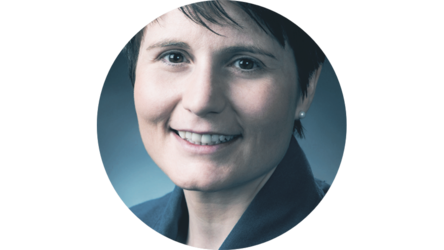Anti-Multipactor Treatment for Dielectrics, Ferrites and Metals
| 758 - Abstract: |
| The present invention proposes a technique to improve the Multipactor performance of materials by using high speed particles (atoms or molecules) impacting on a material’s surface to produce microscopic changes to the surface topology. This surface change leads to an effective improvement of the secondary electron yield properties which is one of the main parameters dictating the Multipactor performance. ESA is looking for partners who would be interested in licensing and implementing this patent. |
Description:
The use of dielectric materials in high power RF designs is growing due to the benefits gained in terms of mass and size. Currently, the Multipactor performance of the dielectric or ferrite materials is often a blocking point preventing the achievement of higher RF power capabilities. Metals and Ferrites are today the baseline materials for high power RF designs but for some more advanced designs their Multipactor performance is a limiting factor. This invention allows the increase in the Multipactor performance of the RF devices without the need to change the way the parts are designed or integrated.
The invention relies on a physical mechanism: non-elastic collisions of atoms/molecules with the material to be treated. The kinetic energy of these collisions modifies the topology of the material’s surface creating crater-like structures. The mechanism is, in essence, the same as the one that is responsible for the craters on the moon but in this invention the impacting agents are atoms/molecules. Due to their size and their extremely large numbers they lead to a surface that is completely covered with these craters. Since it is a physical mechanism, the limitations of the chemical processes or the deposition methods do not exist. Moreover, since the resulting material (after the treatment) is still the same but with a surface full with microscopic craters there is no effective degradation of the RF performance.
The invention does not change the secondary electron yield (SEY) of the material, since that is a property that is intrinsic to the material. However, it is able to improve the ‘effective’ secondary electron yield as shown in the figure below.
This anti-multipactor treatment can be applied on different materials (dielectrics, ferrites and metals) used in RF high power equipment.
A series of materials (Alumina, Rohacell, Teflon, Rexolite, RT Duroid and Ultem) have been subjected to a first example of this treatment. The main SEY parameters and are presented in a table below:
|
Material |
E1 Before (eV) |
E1 After (eV) |
Emax Before (eV) | Emax After (eV) | SEYmax Before | SEYmax After |
| Alumina | 22.2 | 45 | 923.2 | 873 | 7.01 | 3.62 |
| Teflon | 34.2 | 52 | 323.2 | 323 | 2.68 | 1.92 |
| Rexolite | 31.9 | 91 | 323.2 | 323 | 2.92 | 1.5 |
| Ultem | 21.9 | 51 | 373.2 | 280 | 3.05 | 1.51 |
As shown in the table, a significant reduction of the SEYmax parameter (indicating the maximum number of electrons released, on average, for a single impacting electron) is achieved. Furthermore, the E1 parameter shows great improvements (an improvement of a 5-10 eV is considered a major achievement). The E1 parameter denotes the minimum energy that electrons need to have in order to have a SEY greater than one.
Innovations and advantages:
- Directly applicable to any dielectric/ferrite/metal material.
- There is no minimum feature size limit as in the laser engraving method, since the treatment relies on the stochastic collisions of the atoms/molecules and these do not present any minimum distance-between-collisions due to their nature.
- There is no effective degradation of the RF performance, since the resulting material (after the treatment) is still the same.
- No need to change design/integration methods.
- Process is parametrizable.
Domain of application:
The invention could be used to improve the high power RF performance of designs including dielectrics or ferrites. For example for RF switches, circulators and output multiplexers and filters for navigation, output multiplexers for telecommunication and ferrite switches for active remote sensing instruments for earth observation.
Outside the space field, the invention could be of interest in particle accelerators where Multipactor is also a concern and the RF power levels are extremely high.
IP Status
EP patent application has been filed.















 Germany
Germany
 Austria
Austria
 Belgium
Belgium
 Denmark
Denmark
 Spain
Spain
 Estonia
Estonia
 Finland
Finland
 France
France
 Greece
Greece
 Hungary
Hungary
 Ireland
Ireland
 Italy
Italy
 Luxembourg
Luxembourg
 Norway
Norway
 The Netherlands
The Netherlands
 Poland
Poland
 Portugal
Portugal
 Czechia
Czechia
 Romania
Romania
 United Kingdom
United Kingdom
 Slovenia
Slovenia
 Sweden
Sweden
 Switzerland
Switzerland

























